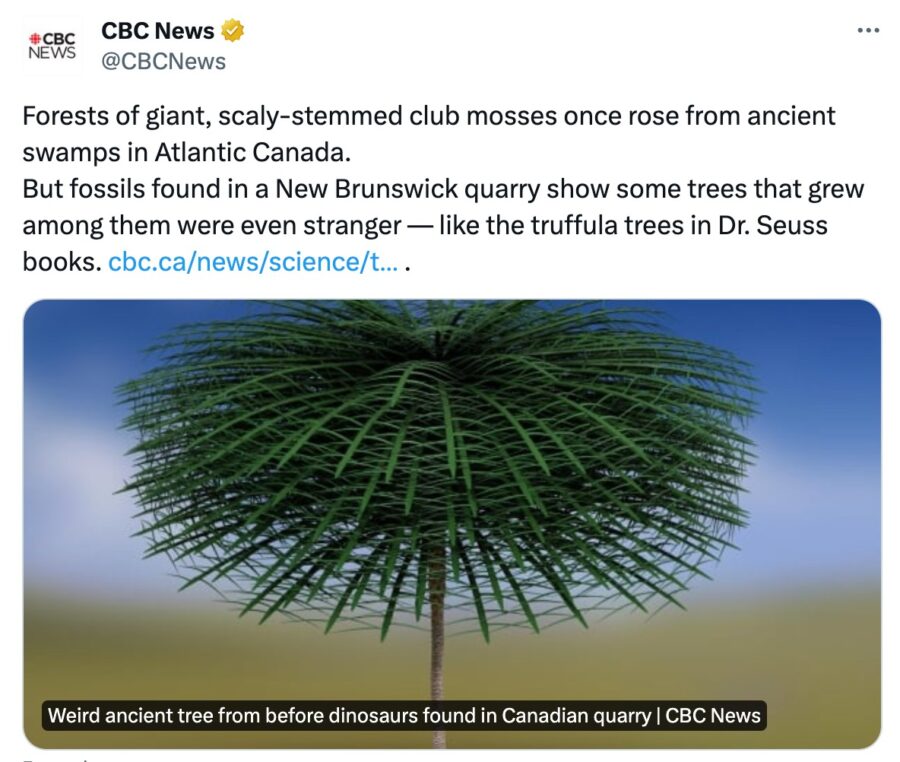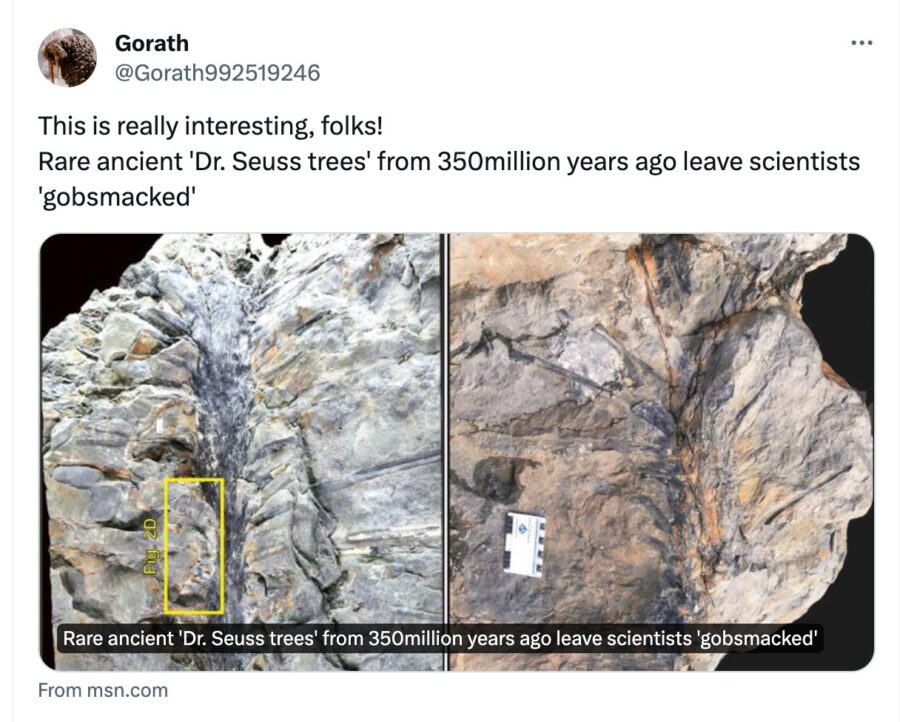Ancient Dr. Seuss Tree From Before Dinosaurs Discovered

A new discovery of fossilized trees in New Brunswick, Canada has left scientists flabbergasted, with some referring to the structures as Dr. Seuss trees. The fossils, which are called Sanfordiacaulis densifolia, appear to be surrounded by arrangements of spiraling branches and leaves due to a series of earthquakes which rattled the area over 352 million years ago. The so-called Dr. Seuss trees have extremely narrow trunks, and are topped with a sort of fuzzy pom-pom shape, mimicking those seen in works such as The Lorax and Horton Hears A Who.
Seuss Trees In The Real World

The dense and intriguing structure of the tree is, admittedly, quite reminiscent of a Dr. Seuss illustration, and opens a window into what Earth’s earliest forests may have looked like before evolving into modern trees as we know them today.
The Good Doctor’s Imagination

It may have seemed that Dr. Seuss simply had an overactive imagination, as his depictions of trees, cityscapes, and strange human-like creatures provided a colorful backdrop for rhyming couplets. Now, it seems that the late doctor may have in fact been attuned to ancient history, as his work has predicted the discovery of the Sanfordiacaulis densifolia tree. Five fossils of the aforementioned Dr. Seuss tree have been unearthed in New Brunswick, buried beneath an incredibly deep quarry.
Time Capsules

The Dr. Seuss trees have been hailed as time capsules which stretch back as far in time as the dinosaurs. The saplings can be dated to the Carboniferous period, when amphibians first began growing limbs to utilize on land. While certain fossil records have provided scientists with great insight into what creatures roamed the Earth during this period, very few discoveries of flora species are available to human record from this time, as the bio-matter has been almost entirely broken down.
The Discovery

Olivia King and Matthew Stimson are credited with unearthing the first Dr. Seuss trees back in 2017, while studying fossil records at the base of an ever-stretching quarry. Since then, at least five more trees of this kind have been recovered, with intact crowns which can help researchers to unlock more ancient secrets from the origin of man. The largest trees dug up from the New Brunswick location span 15 feet tall, with an 18 foot diameter.
How They Withstood Time

The fossils were preserved through their encasing within sandstone boulders, caused by a series of earthquakes which took a catastrophic impact on the region. Landslides and other natural fallout of the disasters caused a unique fossilization process which ripped through all living flora and fauna in the immediate area, and likely continues deep into the recesses of the quarry. If Dr. Seuss were alive today, he may even have a unique opportunity to tackle the trees in a new project, as a means to educate children about the ever-evolving world.
You Don’t Need The Stars For Discovery

The tree fossils provide fascinating insight into the strange and unfamiliar world which our early ancestors may have inhabited. With so many scientists taking to the sky to study space and the worlds beyond Earth, it’s worth pointing out that there are many more scientific discoveries left to be made in our own backyards.
Source: Cell.com











